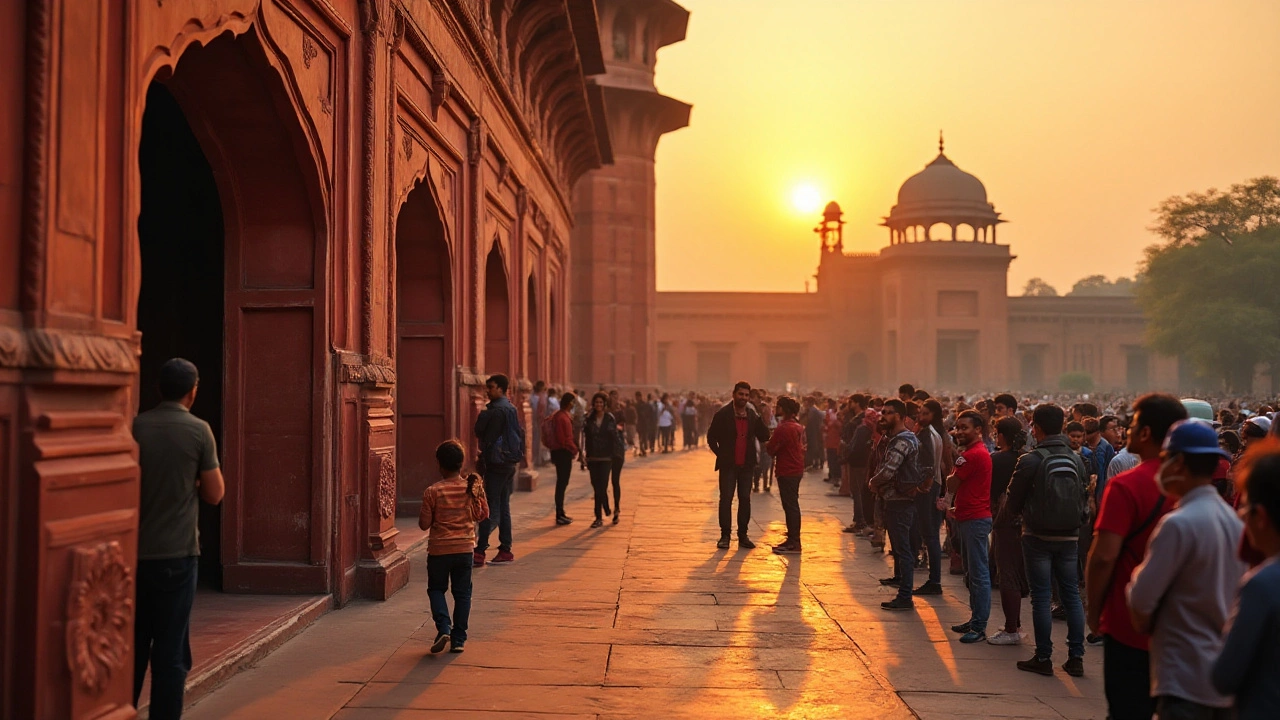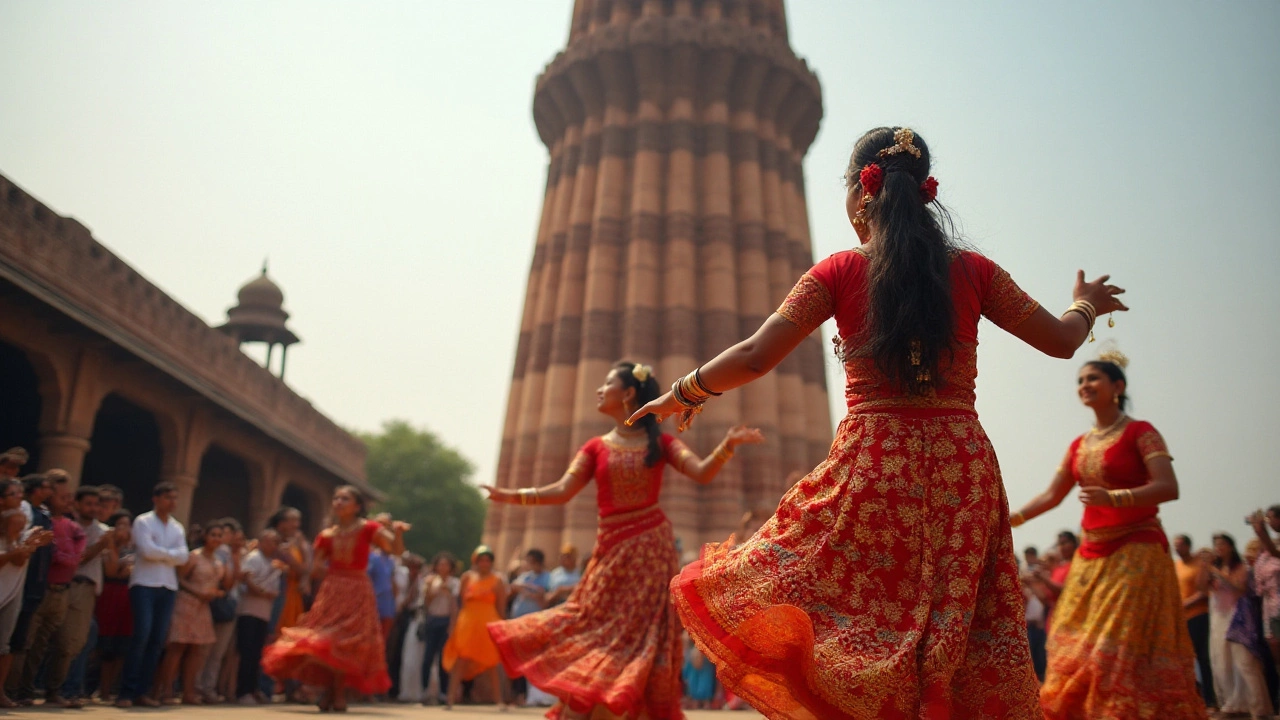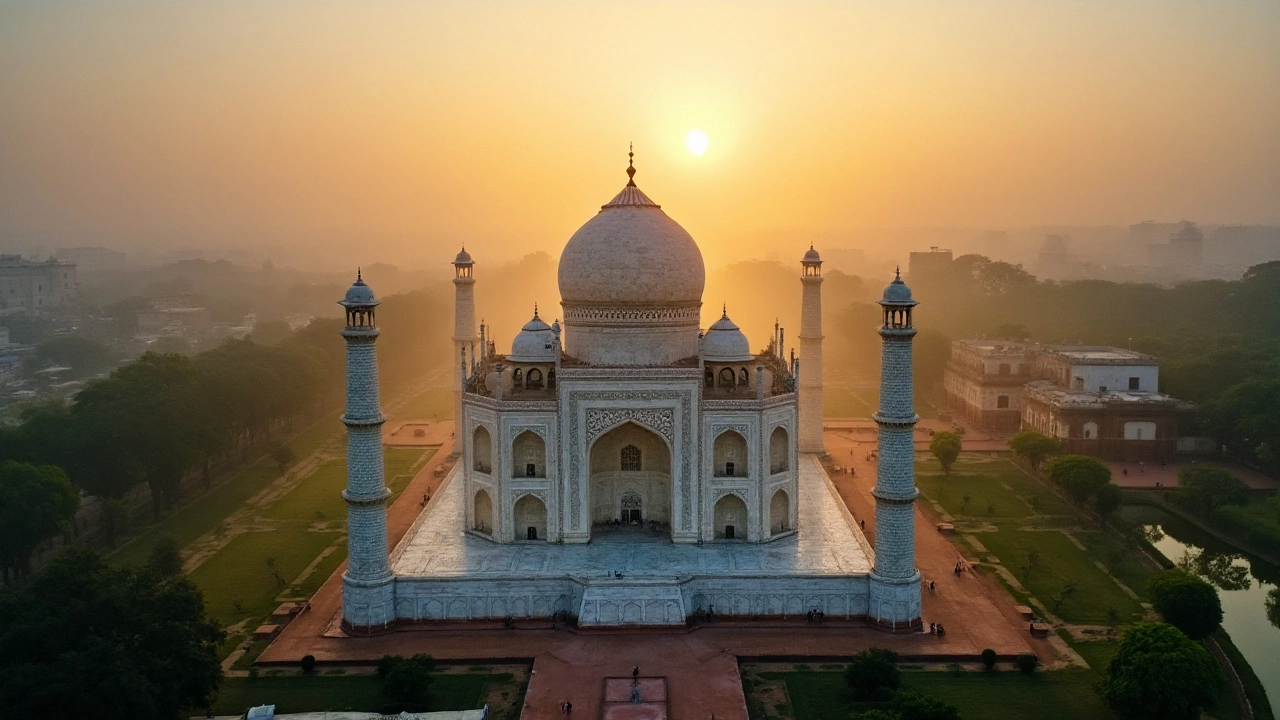North India is an endlessly fascinating region, teeming with diverse cultures, vibrant cities, and ancient wonders. The crown jewel of its tourist destinations is a place that attracts visitors from all corners of the globe, offering both awe-inspiring beauty and a deep historical significance. Join us as we unveil the number one tourist place in North India, a spot that encapsulates the essence of India's rich heritage and allure.
From exploring the intricate details of its architecture to understanding the tales that its walls whisper, this destination promises an unforgettable journey. Whether you aim to dive into its storied past or simply bask in its magnificence, prepare to be captivated. Alongside learning about the site itself, discover practical advice on how best to experience it and uncover nearby gems that complement your adventure.
- The Jewel of North India
- Historical Significance
- Architectural Marvels
- Tips for Visiting
- Nearby Attractions
The Jewel of North India
When one thinks of North India, images of iconic landmarks and regal palaces often come to mind. Among these, standing head and shoulders above the rest, is the Taj Mahal—a timeless masterpiece that is undeniably the crown jewel of the region. Nestled in the historic city of Agra, this magnificent white marble mausoleum is not only a testament to eternal love but also a true architectural wonder that reflects the zenith of Mughal design. Built by Emperor Shah Jahan in memory of his beloved wife Mumtaz Mahal, the Taj Mahal was completed in 1648 AD and continues to enchant visitors with its serene beauty and intricate craftsmanship. The sight of its grand dome, shimmering under the moonlight, has been described as a vision of paradise on earth by many who have had the privilege of witnessing it first-hand.
The historical significance of the Taj Mahal is immense, not only in terms of its romantic backstory but also its impact on the cultural landscape of India. This UNESCO World Heritage site represents the pinnacle of Mughal architecture and is a symbol of the fusion between Indian, Persian, and Islamic artistic traditions. The gardens surrounding the Taj, based on Persian gardens, are laid out in a strict quadrilateral pattern, which symbolizes the four rivers of paradise mentioned in the Qur'an. The meticulous symmetry and the captivating reflection pool accentuate the mausoleum's grandeur, drawing millions of visitors each year. According to a survey conducted by the Ministry of Tourism, the site welcomed over 7 million tourists in 2022, establishing it as a prominent highlight in the itinerary of many globetrotters.
Its allure surpasses its aesthetic appeal; it has inspired countless poets, artists, and historians worldwide. The Pulitzer Prize-winning author Paul Theroux once remarked,
"The world is divided between those who have seen the Taj Mahal, and those who have not."This sentiment is shared by many who have experienced its grandeur. Such accolades and testimonials serve to reinforce the Taj Mahal's standing as a monument of love and an artistic beacon that transcends time.
Visitors to this enchanting site should consider arriving at dawn to witness the first light as it kisses the monument, creating a mystical aura that photographers and romantics eagerly capture. Securing a knowledgeable guide can enrich the experience, as tales of the royal couple, the monument's creation, and its preservation efforts add depth to the visit. A little-known fact that astounds many is the Taj Mahal's changing color throughout the day—from a soft, golden hue at sunrise to a glowing white under the midday sun, and a cool blue tint in moonlight, making each visit unique.
A trip to the Taj is not only about marveling at its beauty; it represents a journey into the depths of India's rich history and the enduring power of love. As we stroll through the gardens, touch the cool marble, and listen to the echoes of the past, the Taj Mahal truly shines as the jewel of North India.
Historical Significance
The pride of North India and a beacon of its rich history is a destination that owes its grandeur not only to exquisite architecture but also to its deep-rooted past. Many centuries back, this site became the epicenter of cultural exchanges, and its story is one woven with threads of power, love, and betrayal. During the period of its construction, an era marked by the grandeur of empires and a surge in artistry, this landmark emerged as an icon of specialized craftsmanship that drew artisans and laborers from different corners of the country. It was built, not just as a structure, but as a symbol to encapsulate the values and aspirations of the civilization that flourished here at that time.
Embedded in every stone are tales of the passionate individuals who worked tirelessly to bring this colossal vision to life. According to historical records, the meticulous nature of the planning and execution demanded decades of dedication, providing employment and shaping the community for generations. Throughout history, this location has stood witness to significant events, including royal ceremonies, pivotal meetings, and transformative negotiations that steered the course of regional history. "This place tells a thousand stories and holds the soul of an ancient civilization," remarked renowned historian Dr. Rajesh Kumar
when speaking of this site's impact on India's narrative.
Moving through time, this place has not only withstood the ravages of natural elements but also evaded conquest attempts. Such resilience conveys a deeper story about the strength and ingenuity of the people associated with its legacy. Each year, scholars and tourists alike remain intrigued by the legend of the site and the numerous untold stories that remain locked within its walls. Its recognition as one of India's top tourist places has not dimmed the enchanting mystery it holds nor lessened its charm. Even today, the very essence of visiting this renowned landmark is an experience of stepping into the shoes of individuals from a bygone era, musing on their footsteps while reveling in its timeless beauty.

Architectural Marvels
The architectural marvels of North India's top tourist attraction are nothing short of mesmerizing. This iconic site, known far and wide, serves as a testament to the region's dazzling blend of artistry and engineering. Each detail, from the grand entrances to the tiniest carvings, speaks volumes of the skilled craftsmanship and visionary ambition that went into creating such a masterpiece.
Majestic and grandiose, the structure stands as a symbolic narrative of India's rich cultural tapestry. One can't help but marvel at the way the various architectural styles have been seamlessly integrated, reflecting the historical influences that have shaped the country's past. It's this unparalleled beauty that leaves countless visitors in awe, eager to explore each nook and cranny of its intricate design.
The exquisite symmetry, a hallmark of this architectural wonder, is designed with such precision that it appears almost surreal to the naked eye. The use of local and imported materials gives the monument its unmistakable sheen, while the ornate motifs and embellishments leave history and art enthusiasts entranced. "The design of this monument is not just a feast for the eyes but a bridge between the past and present," writes renowned historian Professor Aditi Das.
The site isn't just an architectural triumph; it's a vivid piece of history captured in stone.
Material and Design Elements
The materials chosen for the construction were selected not only for their strength and durability but also for their visual appeal. Curious about what gives the place its unique charm? A mix of local marble and imported jewels helped create a stunning mosaic of color and texture that reflects light in the most mesmerizing ways, transforming the mood of the monument at different times of the day.
As one makes their way through the different sections, the unique intricacies of each part become evident. There are specially designed arches and domes that play with echoes, creating an acoustic sensation that further enhances the visitor experience. North India's master artisans achieved an architectural harmony that transcends time, each element complementing the others in a symphony of design.
Structural Highlights
A long-standing icon of North India tourism, the site's structural features contribute to its enduring appeal. The central dome, known for its staggering size and elegance, crowns the monument with a regal presence. Supporting the dome are intricately crafted columns that tell tales of ancient techniques and innovative engineering solutions.
For those more inclined towards an analytical perspective, here is a short table encapsulating some key facts about this structural marvel.
| Architectural Feature | Description |
|---|---|
| Central Dome | Known for its height and elegance, it is the focal point of the structure. |
| Support Columns | Provide strength while featuring intricate carvings. |
| Decorative Arches | Highlight acoustic properties and visual harmony. |
These features make the monument a captivating study in historic and tourism architecture. As visitors navigate the site, the layers of artistry unfold before them, making each trip a unique journey through time, highlighting the monumental impact of the past on today's modern landscapes.
Tips for Visiting
When planning your journey to the number one tourist attraction in North India, it's essential to consider a few practical tips to enhance your experience. First and foremost, the best time to visit is during the cooler months from October to March. The temperatures are more accommodating, allowing you to explore comfortably without the burden of the oppressive summer heat. Arrive early in the morning if you'd like to beat the crowds and witness the site in the soft glow of dawn, which adds an ethereal beauty to the surroundings. It's also a great opportunity to capture stunning photographs without throngs of visitors obstructing your view.
Another key tip is to adequately prepare for the footwear policy. Most sacred sites in India, including this top attraction, require you to remove your shoes before entering certain areas. Wearing comfortable shoes that are easy to remove and bring along a carry bag will make this process considerably smoother. Remember, too, to dress conservatively, as this is a place of reverence and respect. Restrictions against shorts, sleeveless tops, and short skirts are strictly enforced, so plan your wardrobe accordingly.
Consider hiring a guide or utilizing audio tours to gain deeper insights into the historical significance of the site. Local guides are often well-versed in sharing intriguing anecdotes that breathe life into the artifacts and architecture around you. It's not only a chance to appreciate the beauty but also understand the narratives that make this monument a historical marvel. If you're self-guiding, invest in a well-reviewed guidebook or app to ensure a comprehensive experience. As Mahatma Gandhi once wisely said,
"A nation's culture resides in the hearts and in the soul of its people."This rings true as one explores the profound cultural essence captured in this monument.
Keep an eye on personal belongings, especially in crowded areas. While North India tourism is generally safe, being vigilant about your valuables will keep your focus on enjoyment rather than worry. Consider using money belts or secure cross-body bags that rest in front of you for extra security. In case you plan to buy souvenirs offered by local artisans, it might be helpful to have smaller denominations of the local currency to ensure hassle-free transactions.
Lastly, extending your visit to nearby attractions can make your trip even more memorable. Many of these places are accessible by short drives or public transport options. Whether you're enchanted by lush gardens, eager to visit bustling bazaars, or wish to explore historical forts, there's something to add to your itinerary. And don't forget to savor the cuisine unique to the region, as it provides a delicious way to round off your journey through one of India's most iconic destinations.

Nearby Attractions
While the number one tourist place in North India is undoubtedly the highlight of your trip, there are plenty of other remarkable spots that promise to enrich your travel experience. Just a short distance away, you can find sites that offer both historical value and natural beauty. These places often provide a more intimate look at the rich tapestry that makes up this vibrant region, and visiting these nearby attractions can add depth to your understanding and appreciation of India.
One cannot discuss nearby attractions without mentioning the Agra Fort. This UNESCO World Heritage site served as the main residence of the emperors of the Mughal Dynasty until 1638. The red sandstone fortress encloses grand palaces, halls, and gardens that whisper tales of past grandeur and offer panoramic views that are simply breathtaking. If you time your visit right, you might catch a glimpse of a magical sunset, casting a warm glow over the fort's ancient walls. For those intrigued by architectural prowess, the fort is a treasure trove waiting to be explored.
A stone's throw away is Fatehpur Sikri. This city, founded by the Mughal emperor Akbar in the 16th century, stands as a well-preserved ghost town that speaks volumes of its illustrious past. Exploring its streets is somewhat like stepping back in time, with each corner revealing a slice of history. The city's highlights include the Buland Darwaza, a 54-meter high gate, which is considered one of the largest gateways in the world. As you walk through its passages, don't be surprised if the walls echo with stories of the prosperity and cultural richness that once flourished here.
For those who wish to escape into nature, the Keoladeo National Park located not too far away is a haven for bird enthusiasts. This sanctuary, previously known as Bharatpur Bird Sanctuary, is home to hundreds of bird species. From majestic cranes to colorful kingfishers, the park is a photographer's paradise. Walking through its lush pathways, you'll find yourself enveloped in a symphony of bird calls, a tranquil escape from the hustle and bustle of the main tourist areas. Whether you're an avid bird watcher or simply seeking a serene day out, this park offers a delightful break.
If you're interested in a unique blend of spirituality and commerce, make your way to the bustling bazaars of Old Delhi. While not immediately "nearby," the journey to Delhi is well worth it if you're in the mood for shopping and gastronomical delights. These markets are vibrant, chaotic, and utterly intoxicating, filled with the aroma of spices and the clamor of trading voices. Don't forget to negotiate for a fair price; it is almost considered a rite of passage. From intricate handicrafts to mouth-watering street food delights, these markets offer a sensory overload that shouldn't be skipped.
Among all these tourist places, the Yamuna river's banks present a different perspective of the landscape, especially during early morning hours. Boat rides on the river provide stunning views of the main attraction from a different angle, allowing for unique photo opportunities. Witnessing the day break over the waters, with the reflection of grand architectures shimmering in the calm tides, can indeed be a magical experience—one that will likely remain etched in memory long after you've returned home.
"Travel brings power and love back into your life." – Rumi, the famous poet, once said. This sentiment particularly resonates when one explores the multifaceted beauty of North India, each site enhancing the richness of the journey.
